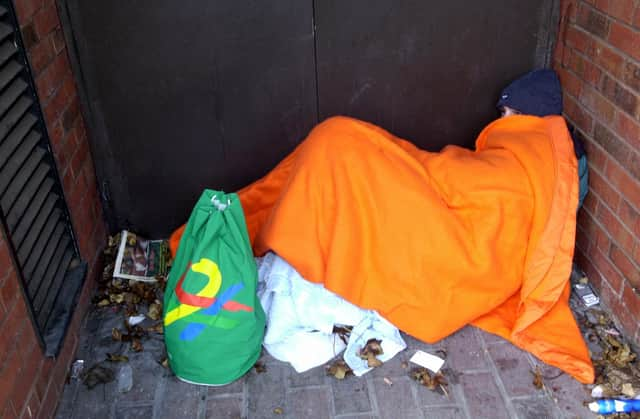Spike in rough sleepers in Northumberland sees highest number on record


The annual autumn snapshot, which provides information about the estimated number of people sleeping rough on a single night between October 1 and November 30 each year, recorded 15 in the county in 2019 – up from zero in 2018.
It is widely accepted that there are a number of limitations to this count, particularly in a large, rural and sparsely populated county like Northumberland.
Advertisement
Hide AdAdvertisement
Hide AdLocal authorities across England use either a count-based estimate of visible rough sleeping, an evidence-based estimate meeting with local partners, or an evidence-based estimate meeting, including a spotlight count in specific areas.
Nonetheless, the Government still considers that these statistics provide a way of estimating the number of people sleeping rough across England on a single night and assessing change over time.
And in Northumberland, the 2019 figure was more than double the number recorded in any of the previous years since this methodology was introduced in 2010.
The previous high was six, recorded in 2010 and 2014, while no rough sleepers were counted in either 2016 or 2018.
Advertisement
Hide AdAdvertisement
Hide AdIn previous reports on tackling homelessness, the county council has acknowledged that rough sleeping ‘is generally under-reported in Northumberland’ and that ‘a number of hidden homeless and sofa surfers exist and cannot be easily identified’.
Last year, the authority refreshed its homelessness strategy in light of new legislation, although the document is still due for a full review at the end of its five-year term in 2021.
The updated strategy has six priorities: To prevent homelessness by improving support to vulnerable client groups; to increase options for, and ensure access to, suitable temporary accommodation; to support people through Welfare Reform, particularly Universal Credit; to remove barriers to permanent accommodation; to prevent youth homelessness; and to develop services for rough sleepers.
When it was introduced last spring, head of housing and public protection, Phil Soderquest, said: “We will develop an action plan with our partners and that will be a dynamic document that will change.
“We as an organisation cannot resolve homelessness or rough sleeping on our own, we are working with partners to do so.”